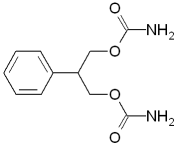The American Academy of Neurology (AAN) has released evidence-based guidelines for prescribing new antiepileptic drugs (AEDs) in patients with new-onset epilepsy and refractory epilepsy. The recommendations, "Efficacy and Tolerability of the New Antiepileptic Drugs I: Treatment of New Onset Epilepsy" and "II: Treatment of Refractory Epilepsy" are available online at http://www. neurology.org/content/vol62/issue8/.
In the past decade, the U.S. Food and Drug Administration approved felbamate and seven new AEDs: gabapentin, oxcarbazepine, lamotrigine, topiramate, tiagabine, levetiracetam, and zonisamide. The development of new AEDs was spurred by evidence that the existing AEDs did not provide optimal care for patients with epilepsy. A committee of the AAN evaluated the efficacy, tolerability, and safety of the new AEDs in patients with new-onset epilepsy and refractory epilepsy.
* New-Onset Epilepsy. Gabapentin is effective in the treatment of newly diagnosed partial epilepsy. Lamotrigine, topiramate, and oxcarbazepine are effective in a mixed population of patients with newly diagnosed partial and generalized tonic-clonic seizures. However, no recommendations can be made for the individual syndromes.
Oxcarbazepine is as effective as carbamazepine and phenytoin, but it is superior in dosage-related tolerability. It is equivalent in efficacy and tolerability to valproic acid. Topiramate at dosages of 100 and 200 mg per day was equivalent in efficacy and safety to a 600-mg fixed dose of carbamazepine and 1,250 mg per day of valproic acid. Lamotrigine is as efficacious as carbamazepine and phenytoin and superior in tolerability to carbamazepine. Topiramate at dosages of 100 and 200 mg per day is equivalent in safety and efficacy to 600 mg of fixed-dosage, immediate-release carbamazepine given twice daily in patients with partial seizures, and to 1,250 mg of fixed-dose valproic acid in patients with idiopathic generalized seizures. Gabapentin is as effective as monotherapy at dosages of 900 and 1,800 mg, and it is equivalent in efficacy to a 600-mg fixed dose of carbamazepine. A 900-mg dose of gabapentin is better tolerated than 600 mg of fixed-dose, short-acting carbamazepine given twice daily.
The committee recommends that therapy in patients with newly diagnosed epilepsy be initiated with standard AEDs or lamotrigine, gabapentin, oxcarbazepine, or topiramate. The choice of AED will depend on individual patient characteristics. Lamotrigine can be considered in children with newly diagnosed absence seizures.
* Refractory Epilepsy. All of the new AEDs Epilepsy are appropriate for adjunctive treatment of refractory partial seizures in adults. Gabapentin may be effective for the treatment of mixed-seizure disorders, and gabapentin, lamotrigine, oxcarbazepine, and topiramate may be effective for the treatment of refractory partial seizures in children. Limited evidence suggests that lamotrigine and topiramate also are effective for adjunctive treatment of idiopathic generalized epilepsy in adults and children.
The committee recommends that gabapentin, oxcarbazepine, lamotrigine, topiramate, tiagabine, levetiracetam, and zonisamide be considered as add-on therapy in patients with refractory epilepsy. Oxcarbazepine, lamotrigine, and topiramate can be used as monotherapy in patients with refractory partial epilepsy. Topiramate can be used for the treatment of refractory generalized tonic-clonic seizures in adults and children. Gabapentin, lamotrigine, oxcarbazepine, and topiramate may be used as adjunctive treatment in children with refractory partial seizures.
COPYRIGHT 2005 American Academy of Family Physicians
COPYRIGHT 2005 Gale Group



